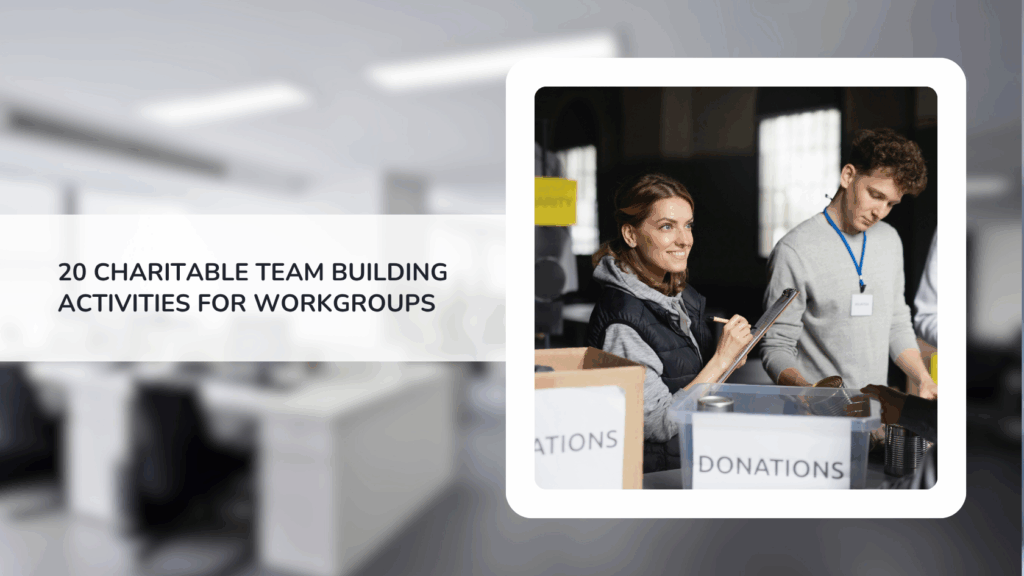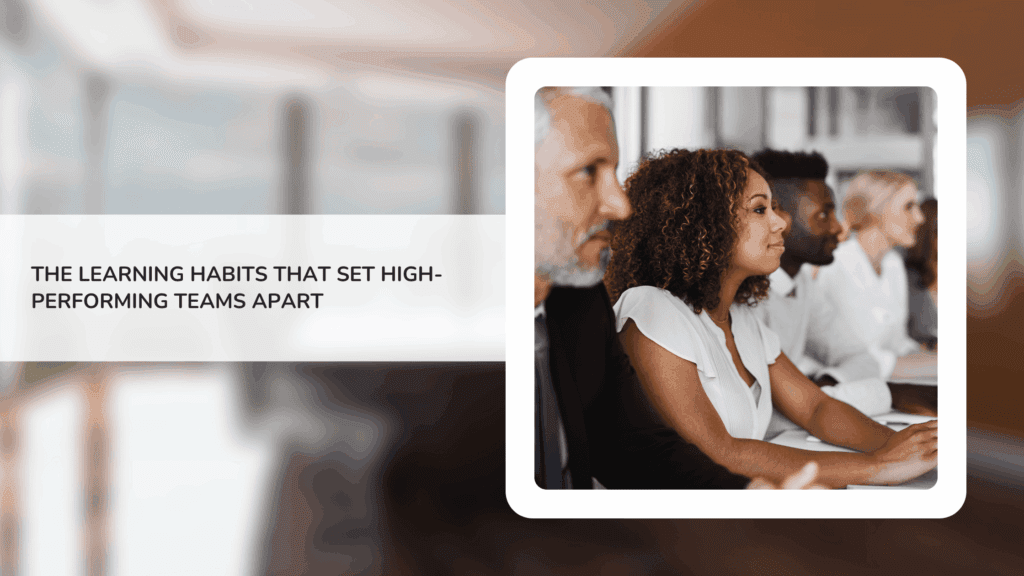Planning a corporate event can feel overwhelming, but with the right strategy, it doesn’t have to be. This guide breaks down ten simple, effective steps to help you organize a seamless event—whether it’s an in-person gathering, a hybrid experience, or a virtual session.
Corporate event planning isn’t just about picking a venue and sending out invites. Whether you’re organizing a leadership retreat, a team building day, or a company-wide conference, there are countless moving parts—and if just one thing goes wrong, it can throw off the entire experience.
That’s why smart planning is essential.
From setting clear goals to engaging attendees (both in-person and virtual), every detail matters.
In this guide, we’re breaking down ten simple, expert-backed steps to make your corporate event a success—without the stress.
Table of Contents
- Step 1: Define Clear Objectives
- Step 2: Understand Your Audience
- Step 3: Develop a Realistic Budget
- Step 4: Assemble a Dedicated Corporate Event Planning Team
- Step 5: Choose the Right Venue and Format
- Step 6: Engage Participants with Interactive Activities
- Step 7: Leverage Technology for Seamless Execution
- Step 8: Promote the Event Effectively
- Step 9: Prepare for Contingencies
- Step 10: Evaluate and Gather Feedback
Step 1: Define Clear Objectives

Before you book a venue, hire speakers, or plan activities, you need to get one thing straight: what’s the goal of this event?
Too many corporate events fail because they lack a clear purpose, leaving attendees disengaged and organizers scrambling to justify the effort.
Ask yourself:
- What should attendees walk away with? New skills? Stronger team connections? A deeper understanding of company goals? Stronger social bonds? All of the above?
- How will success be measured? Employee feedback? Attendance rates? Post-event performance improvements?
- Who is this event for? Executives? Employees? Clients? A mix of stakeholders?
By locking in your objectives early, you’ll be able to shape every detail of the event—from the content and structure to the marketing and follow-up. It will also help you avoid unnecessary spending on things that don’t align with your end goals.
Pro Tip: Keep your objectives specific and measurable. Instead of “boost team morale,” set a goal like “increase employee engagement scores by 15% in the next quarterly survey.”
Step 2: Understand Your Audience
A great corporate event isn’t just well-organized—it’s tailored to the people attending. If your event doesn’t align with your audience’s needs, expectations, or preferences, it won’t have the impact you’re aiming for.
The best corporate event planning is rooted in real insights and research.
So, start by asking questions like:
- Who will be in the room (or on the call)? Are they executives, mid-level employees, clients, or a mix?
- What do they care about? Professional development? Networking? Hands-on engagement?
- What challenges do they face? A team struggling with communication might benefit from interactive activities, while executives may prefer high-level strategy discussions.
For hybrid events, this becomes even more important.
Why?
Because in-person attendees and virtual participants will have different experiences, so you need to plan accordingly.
Consider tech-friendly solutions like live Q&A sessions, interactive polls, and breakout rooms to keep everyone engaged.
Once you understand your audience, use that insight to:
- Choose a format that fits their preferences (formal conference, casual retreat, interactive workshop)
- Select speakers and activities that resonate with them
- Adjust the event schedule to match their attention spans and availability
Ignoring your audience’s needs is one of the biggest reasons corporate events fall flat. Plan with them in mind, and you’ll create a more valuable and engaging experience.
Bonus consideration: When it comes to corporate event planning, you’ll often have two audiences to consider—your leaders and your colleagues. Leaders may be more focused on professional outputs and your colleagues might be more focused on having a great time together. With the right event plan, you can check both boxes. More to come on that!
Step 3: Develop a Realistic Budget
A corporate event can unravel quickly without a solid budget. Overspending on the wrong things—or realizing too late that you didn’t allocate enough for key elements—can lead to unnecessary stress, last-minute cutbacks, and a subpar experience for attendees.
A realistic, well-structured budget ensures that every dollar spent aligns with your event’s goals.
Break Your Budget into Key Categories
Before you start spending, divide your budget into essential categories to ensure nothing gets overlooked.
You’ll need to consider:
- Venue Costs: Consider expenses such as rental fees, permits, security, and any additional costs related to ensuring the space meets accessibility needs. The venue should align with the size and purpose of your event without exceeding your budget.
- Technology and Equipment: Factor in the cost of A/V equipment, microphones, virtual event platforms, Wi-Fi access, and IT support. For hybrid events, you’ll need reliable streaming and communication tools to engage remote attendees.
- Food and Beverage: Budget for catering, coffee breaks, and refreshments. Take into account dietary restrictions and preferences to accommodate all attendees.
- Speakers and Activities: Allocate funds for guest speakers, team building activities, workshops, and any special entertainment that enhances engagement.
- Marketing and Event Materials: Include costs for printed and digital invitations, event signage, branded swag, programs, and any promotional efforts required to boost attendance.
- Logistics and Staffing: Account for expenses related to travel, accommodations, transportation, and on-site staff. If your event involves multiple locations or remote participants, ensure you budget for any necessary coordination efforts.
Once you have a clear breakdown, prioritize spending based on your event’s objectives.
If networking is the focus, allocate more to catering and a well-designed venue. If the goal is engagement, invest in interactive activities and speakers.
Budgeting Hacks: 4 Smart Ways to Save Without Sacrificing Quality
A strong event doesn’t have to mean a sky-high budget. There are strategic ways to keep costs under control while maintaining a high-impact experience.
Here are a few things you can do:
- Book early: Venues, vendors, and travel costs increase significantly closer to the event date. Lock in contracts early for better rates. We’ll dive into this in more depth later on in the guide.
- Leverage hybrid elements: A well-balanced mix of in-person and virtual components can reduce venue, travel, and catering costs while expanding accessibility.
- Utilize internal resources: If your company has a conference room, in-house A/V equipment, or employees who can lead workshops, use them.
- Negotiate with vendors: Many vendors offer discounts for bundling services, repeat business, or flexible booking dates.
Budgeting isn’t just about cutting costs—it’s about maximizing impact. When planned strategically, your budget ensures you invest in the elements that will deliver the best experience for your attendees.
Step 4: Assemble a Dedicated Corporate Event Planning Team

Even the most well-thought-out event plan will fall apart without the right people executing it, and the truth is that event planning is incredibly tough for any single person.
That’s why you need a strong, organized planning team.
These people are the backbone of a successful corporate event, ensuring that every detail is handled efficiently and nothing gets overlooked.
Assign Clear Roles and Responsibilities
A corporate event has many moving parts, and if responsibilities aren’t clearly defined, things will slip through the cracks.
Break down your planning team into key roles to ensure everything runs smoothly. We’d recommend the following team structure:
- Event Lead: The person in charge of the overall event. This role requires decision-making authority, the ability to coordinate across teams, and strong problem-solving skills.
- Logistics Coordinator: Manages the venue, transportation, and scheduling details. This person ensures that everything runs on time and that all logistics are accounted for.
- Engagement & Experience Manager: Focuses on attendee engagement, from curating activities and speakers to ensuring the event delivers value to its audience.
- Internal Marketing & Communications Lead: Oversees internal event promotion, email communications, social media, and internal messaging to drive attendance and engagement.
- Technology Specialist: Ensures that A/V equipment, virtual event platforms, and live-streaming elements work without a hitch. This role is especially important for hybrid events.
For smaller events, a few people may handle multiple roles. However, never assume that responsibilities will naturally fall into place—assign tasks proactively to avoid last-minute chaos.
Use Collaboration Tools to Stay Organized
With so many moving parts, a clear system for tracking progress and communication is essential. Even for in-person events, remote collaboration tools can streamline the process and prevent miscommunication.
We’d recommend using:
- Project management tools like Asana, Trello, or Monday to track tasks, deadlines, and responsibilities.
- Communication platforms such as Slack or Microsoft Teams to keep conversations organized and easily accessible.
- Cloud storage solutions like Google Drive or Dropbox to manage shared files, event schedules, and important documents.
Hold Regular Check-Ins and Adjust as Needed
An event plan isn’t static—things change, and unexpected challenges arise. Regular team check-ins help keep everything on track and ensure that any roadblocks are addressed early.
It’s a wise plan to schedule:
- Weekly progress meetings leading up to the event to review milestones and tackle any bottlenecks.
- Daily huddles in the final week to confirm last-minute details and finalize execution plans.
- Post-event debriefs to assess what worked, what didn’t, and how to improve future events.
A well-structured, proactive planning team ensures that your corporate event isn’t just well-organized but also executed seamlessly.
Get the right people in place, set them up with the right tools, and watch the pieces come together.
Step 5: Choose the Right Venue and Format

Your venue and event format set the stage for the entire experience—literally and figuratively.
Choose the wrong one, and you’ll be dealing with logistical nightmares, disengaged attendees, and a lackluster atmosphere.
The right choice, however, ensures seamless execution and keeps participants engaged, whether they’re in the room or attending remotely.
5 Key Factors to Consider When Selecting a Venue
Not all venues are created equal. Before you lock in a location, consider the following:
- Capacity and Layout: Ensure the space comfortably fits your expected headcount. Think about room configurations, breakout areas, and accessibility needs. A cramped venue can stifle engagement, while a too-large space can make attendance feel sparse.
- Location and Accessibility: Choose a venue that’s easy to reach for in-person attendees. Consider parking, public transportation, and accommodations for out-of-town guests. The more convenient it is, the higher your attendance rate will be.
- Technology and Amenities: Look for venues with reliable Wi-Fi, built-in A/V capabilities, and adequate lighting and acoustics. For hybrid events, ensure seamless live-streaming capabilities. Poor tech infrastructure can derail even the best-planned event.
- Atmosphere and Branding: The venue should match the tone and purpose of your event. A formal business summit calls for a polished conference center, while a creative retreat might work better in an open, collaborative space. The setting plays a huge role in shaping the attendee experience.
- Cost and Flexibility: Does the venue fit your budget? Can it accommodate last-minute changes or cancellations without excessive fees? Flexibility is key, especially in unpredictable circumstances.
Every detail of your venue impacts the flow and feel of your event. By considering these factors upfront, you’ll avoid logistical headaches and ensure a smooth experience for attendees.
Looking for more insights? We have two guides you’ll love—one covers how to pick the perfect indoor venue for your event and the other dives into how to pick the right outdoor event venue.
Choosing the Right Event Format
A successful event isn’t just about where it happens—it’s about how it happens. Selecting the right format ensures that attendees stay engaged and get the most out of the experience.
This will depend largely on your team structure and event budget, but generally speaking:
- In-Person Events: Best for hands-on workshops, networking-heavy gatherings, and interactive team building activities. When face-to-face interaction is critical, this format is the way to go.
- Hybrid Events: Ideal for companies with remote teams, offering flexibility for both in-person and virtual attendees. A well-executed hybrid event requires strong tech support and engagement tools to ensure an equal experience for all participants.
- Virtual Events: A cost-effective option for training sessions, speaker panels, or company-wide meetings. The key is keeping attendees engaged with interactive elements like live Q&As, breakout rooms, and polls to prevent screen fatigue.
The best venue and format for your event will depend on your goals, audience, and budget.
If networking and collaboration are priorities, an in-person setting might be best. If accessibility and cost-effectiveness matter more, a hybrid or virtual format could be the smarter choice.
Don’t just go with the first venue that looks good on paper—visit in person, test the technology, and make sure it aligns with your event’s objectives. A well-chosen venue and format will set your event up for success long before the first guest arrives.
Step 6: Engage Participants with Interactive Activities
Even the most well-organized corporate event can flatline if attendees aren’t actively engaged. Sitting through long speeches or passive presentations isn’t enough—people need to participate, interact, and feel involved.
The more engaging your event, the more impactful it will be.
One of the most effective ways to boost engagement?
Incorporating interactive team building activities and professional development sessions.
Events that include structured opportunities for collaboration, problem-solving, and skill-building create stronger connections and more memorable experiences.
Why Engagement Matters for Your Corporate Event
Corporate events aren’t just about delivering information—they’re about creating meaningful experiences.
Engaged attendees are more likely to:
- Retain information from presentations and workshops
- Build stronger relationships with colleagues, improving workplace collaboration
- Actively participate in discussions, networking, and breakout sessions
- Walk away with tangible skills, insights, or takeaways they can apply at work
If your event is primarily presentation-driven, attendees will eventually tune out. Structured interaction ensures they stay invested, whether they’re in the room or joining virtually.
5 Ways to Keep Attendees Engaged at Your Corporate Event
Instead of relying on one-way communication, incorporate activities that encourage participation and connection.
- Collaborative Team Building Challenges: Activities that require teamwork and problem-solving bring people together in a way that no lecture ever could. Whether it’s an engaging scavenger hunt, a problem-solving simulation, or a creative challenge, structured team building breaks up long sessions and gets people working together.
- Skill-Based Professional Development Workshops: Help attendees gain new skills with hands-on learning experiences. Workshops on leadership, communication, conflict resolution, or collaboration can be interactive, practical, and directly applicable to the workplace.
- Breakout Discussions with Guided Exercises: Rather than passive Q&A sessions, break attendees into small groups with specific challenges to tackle. This can be as simple as a structured brainstorming session or a case study exercise that ties into the event’s overall theme.
- Engaging Hybrid Activities: For events with both in-person and virtual attendees, engagement can be tricky. Incorporate interactive elements like self-hosted team building activities, live polling, or small group discussions that blend digital and face-to-face interaction.
- Gamification and Friendly Competition: Turning activities into a competition—whether through trivia, problem-solving challenges, or reward-based participation—keeps energy levels high and encourages involvement.
When engagement is built into your corporate event, attendees walk away feeling more connected, inspired, and aligned with your company’s goals.
The best events don’t just entertain—they create lasting impact through hands-on, meaningful experiences.
Step 7: Leverage Technology for Seamless Execution
No matter how well you plan, your corporate event can go off the rails fast if the technology doesn’t work.
Whether it’s a hybrid conference, a company retreat, or a professional development workshop, tech plays a critical role in ensuring everything runs smoothly—from registration and communication to engagement and follow-up.
Key Tech Considerations for a Smooth Event
Technology should enhance your event, not complicate it. Before the big day, make sure you have the right tools in place to handle:
- Registration and Check-In: Use online registration platforms to streamline sign-ups, collect attendee information, and track participation. Digital check-in tools can also help manage guest lists at in-person events.
- Communication and Scheduling: Event management apps, automated email reminders, and calendar integrations help attendees stay informed. A well-structured communication plan reduces confusion and ensures a smooth experience.
- Presentation and A/V Support: High-quality microphones, screens, projectors, and reliable internet are essential for any live or hybrid event. Poor sound or connectivity issues can ruin even the best presentations.
- Hybrid and Virtual Engagement: If your event includes remote attendees, ensure seamless live-streaming, interactive Q&A features, and digital collaboration tools. Engagement should feel just as natural for virtual participants as it does for those attending in-person
Using Tech to Enhance Team Building and Professional Development
Technology isn’t just about logistics—it can also boost engagement and collaboration during your event.
- Virtual and Hybrid Team Building Activities: Digital platforms allow remote and in-person employees to participate in structured activities together, ensuring hybrid teams feel equally involved.
- Interactive Polling and Surveys: Real-time audience polls and post-event surveys keep participants engaged and provide valuable insights into their experience.
- Collaboration and Breakout Tools: Platforms like Zoom breakout rooms, Miro boards, and shared Google Docs make it easy for teams to work together in real-time, no matter where they are.
At Outback, we incorporate technology seamlessly into both our in-person and virtual team building activities to help keep engagement high.
Many of our in-person team building activities tap into smartphone apps for ease of use, and our virtual team building activities leverage breakout rooms to help create a more personal feel.
Making Sure You Test Everything Ahead of Time
Tech failures are one of the biggest causes of event-day stress—and they’re almost always preventable.
When you’re incorporating technology into your corporate event, make sure to:
- Run a full tech rehearsal: Test microphones, slides, live-streaming tools, and breakout functions in advance.
- Have a backup plan: Always have spare equipment, extra logins, and a tech support team on standby.
- Make it easy for attendees: If participants need to use a new platform, provide clear instructions ahead of time to avoid confusion.
Technology should enhance your corporate event, not become a roadblock.
Step 8: Promote the Event Effectively

Even the best-planned corporate event won’t be a success if no one shows up. Getting people excited and ensuring strong attendance requires a well-thought-out promotion strategy. Whether it’s an internal company event or an external conference, how you market it will directly impact engagement.
To maximize participation, focus on early communication and clear value. A few essential steps include:
- Sending save-the-dates early so attendees can block their calendars
- Using multiple communication channels like email, internal chat platforms, and company newsletters
- Positioning the event as valuable by highlighting professional development opportunities, networking, and engaging activities
- Generating pre-event excitement through teaser announcements, leadership endorsements, or interactive lead-up challenges
Each of these tactics ensures your audience knows what to expect and why they should attend.
To learn how to execute this step-by-step, check out our guide: How to Promote Your Team Building Activity Successfully.
Step 9: Prepare for Contingencies
In the words of André 3000:
“You can plan a pretty picnic, but you can’t predict the weather.”
No matter how well you plan your corporate event, something will go wrong.
Technical difficulties, last-minute speaker cancellations, weather disruptions—unexpected issues happen at every event. The difference between a smooth recovery and a disaster is how well you’ve prepared.
So, expect challenges and plan for them.
Identify Potential Risks in Advance
The best way to avoid last-minute scrambling is to anticipate problems before they happen. As you finalize your event details, ask yourself:
- What happens if key personnel cancel? Have backup speakers, facilitators, or moderators ready.
- What if the technology fails? Test all A/V equipment, internet connections, and virtual platforms beforehand—and have a tech support team on standby.
- What if attendance is lower than expected? Consider hybrid participation options or a follow-up strategy to engage those who couldn’t attend live.
- What if bad weather or travel delays affect the event? Have a plan for rescheduling, offering virtual participation, or adjusting the agenda.
A well-structured contingency plan reduces stress, keeps things on track, and ensures attendees still have a great experience.
Build Flexibility Into Your Corporate Event Plan
Even if nothing goes seriously wrong, things rarely run exactly as expected. Timelines shift, discussions go longer than planned, and audience energy fluctuates.
The best event planners:
- Keep the schedule flexible to accommodate slight delays or last-minute adjustments
- Have backup activities ready in case something falls through
- Empower the team to make quick decisions without waiting for approval on every detail
Events that can adapt in real-time always feel more polished and professional—even when things don’t go according to plan.
Step 10: Evaluate and Gather Feedback
A corporate event isn’t truly successful unless you know what worked, what didn’t, and how to improve for next time.
Gathering feedback and measuring success ensures that future events are even better, more engaging, and more valuable for attendees.
Measure Success Against Your Event Goals
At the start of the planning process, you defined clear objectives—now it’s time to see if you met them.
Ask yourself:
- Did the event achieve its core purpose? Whether it was boosting employee engagement, training teams, or fostering collaboration, assess whether your event delivered on its goals.
- How was attendance and participation? Were people engaged? Did they actively take part in discussions, team building activities, or networking?
- What were the key takeaways for attendees? Did participants leave with new skills, stronger connections, or valuable insights?
By analyzing these factors, you’ll get a clearer picture of your event’s overall impact.
Collect Attendee Feedback
No one can tell you how well the event went better than the people who attended. Use multiple methods to gather honest feedback:
- Post-Event Surveys: Send out a quick survey immediately after the event to capture fresh impressions. Ask about overall satisfaction, favorite sessions, and areas for improvement. At Outback, we like to use SurveyMonkey to easily gather feedback from our team, but there are a ton of options you can choose from.
- Live Polling During the Event: Use interactive polling tools to gauge engagement in real time. This is especially useful for hybrid events.
- One-on-One Conversations: For internal company events, informal discussions with key attendees can provide deeper insights than survey data alone.
Apply Insights to Future Events
Feedback is useless unless you do something with it. After gathering responses, review what went well and identify areas for improvement. Then, document key learnings to guide future planning.
We’d recommend that you use this feedback to:
- Refine event structure based on engagement levels
- Adjust content and activities to better match attendee interests
- Improve logistics and execution based on common pain points
Corporate event planning is a learning process. By tracking results and continuously improving, each event will be stronger, more impactful, and more valuable for your team.
Corporate event planning is more than just logistics—it’s about creating experiences that engage, inspire, and deliver real value to attendees.
When done right, a well-executed event strengthens relationships, builds skills, and fosters a stronger company culture.
By following these ten steps, you’ll set yourself up for success and plan a corporate event that builds stronger, more connected teams.
Plan a Flawless Corporate Event.
If you’d like help in planning a corporate event that balances fun, engagement, and professional outcomes, reach out to an Employee Engagement Consultant.



